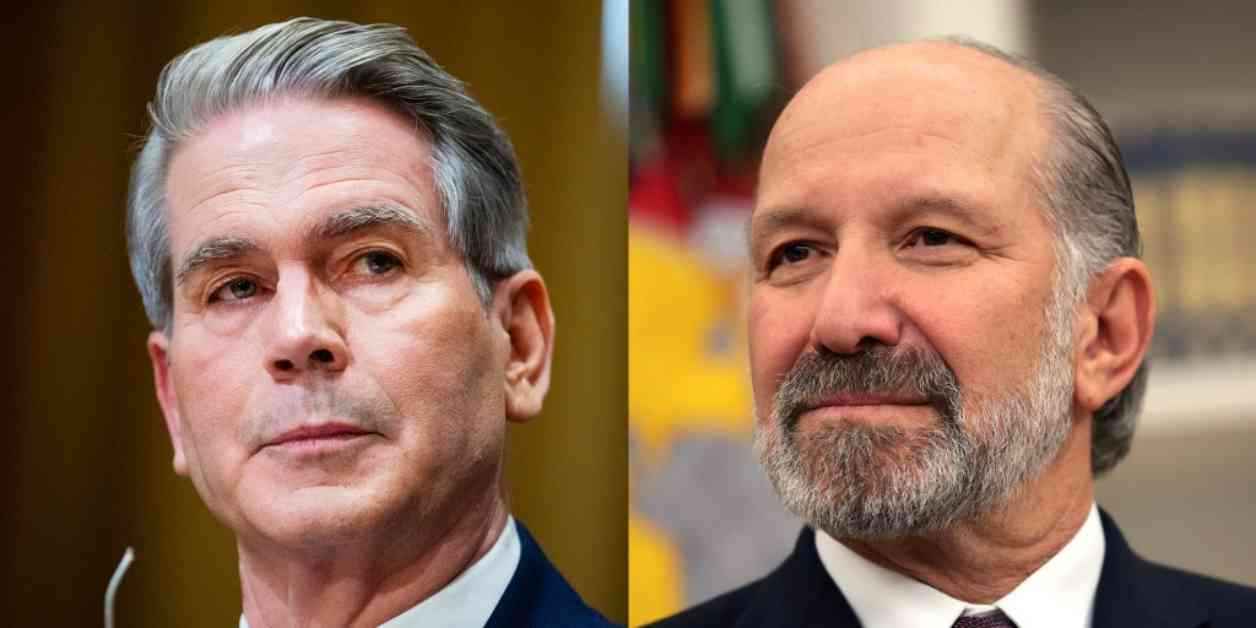President Donald Trump and his allies have recently issued warnings of potential economic challenges on the horizon for Americans. This cautionary tale comes as the administration moves forward with plans to implement tariffs on billions of dollars of incoming goods and terminate thousands of federal workers nationwide.
During a speech to Congress, Trump forewarned citizens to brace themselves for a “little disturbance” resulting from the sweeping tariffs set to be imposed on a significant volume of goods. Treasury Secretary Scott Bessent predicted a transitional phase for the economy as it navigates away from government spending. Additionally, Commerce Secretary Howard Lutnick indicated that certain items could witness price hikes due to these tariffs, although he assured that overall inflation would remain stable.
Despite the optimistic rhetoric espoused during his campaign, Trump and key administration figures are now framing any potential economic setbacks as short-term sacrifices necessary for long-term economic betterment. The President’s initial promise to eliminate inflation and foster affordability within America has seemingly evolved in light of current circumstances.
Amidst these economic musings, the nation is faced with a mixed bag of economic indicators. February saw the addition of fewer jobs than expected, with the federal government’s reductions offsetting private sector hiring gains. This imbalance nudged the unemployment rate up slightly to 4.1% from the previous month’s 4.0%. As a result, the stock market across major indexes is poised to conclude the week on a downward trajectory.
Challenges and Forecasts
Trump’s address to Congress underscored the inevitable turbulence ahead, emphasizing that while there might be disruptions, they are anticipated to be manageable. Specifically, the agricultural sector may bear the brunt of retaliatory tariffs imposed on U.S. agricultural products, echoing a scenario experienced during his first term.
Responding to queries about Trump’s economic caution, White House press secretary Karoline Leavitt defended the President’s candidness, characterizing it as a crucial step towards monumental reform and change sought by the American populace. Leavitt emphasized that such transformation might require some disruption while also reiterating Trump’s commitment to rectifying the purported inflation crisis inherited from the previous administration.
Trump’s recent escalation of tariffs on key trading partners, notably China, Mexico, and Canada, has caused ripple effects across various sectors. Anticipating further tariff expansions on products from diverse countries starting April 2, the administration is intensifying its economic maneuvers.
Expert Insights and Speculations
Treasury Secretary Bessent acknowledged the impending economic adjustments, suggesting that the current economic scenario inherited by the administration may be undergoing a transformation towards private spending from public expenditure. The imposition of tariffs was described as a one-time price correction, underscoring the short-lived nature of these economic tweaks.
Despite assurances from administration officials that tariffs would not significantly impact inflation, companies like Target and Best Buy are already anticipating price hikes. While these adjustments are presumed to be transient, concerns about potential inflationary trends loom in the background.
Economists are apprehensive about the government’s decision to lay off thousands of workers, with fears of a broader impact on the labor market. While the latest statistics indicate a modest effect from these layoffs, the full extent of these reductions remains unknown. Trump remains resolute in his belief that the labor market will thrive, albeit with a shift towards high-paying manufacturing jobs at the expense of government positions.
In conclusion, the economic landscape is poised for a period of transition and transformation as the administration navigates the intricate web of tariffs, layoffs, and economic reforms. The road ahead may be riddled with challenges and uncertainties, but it also holds the promise of revitalizing the American economy in ways that could potentially benefit the workforce and enhance overall economic stability.


